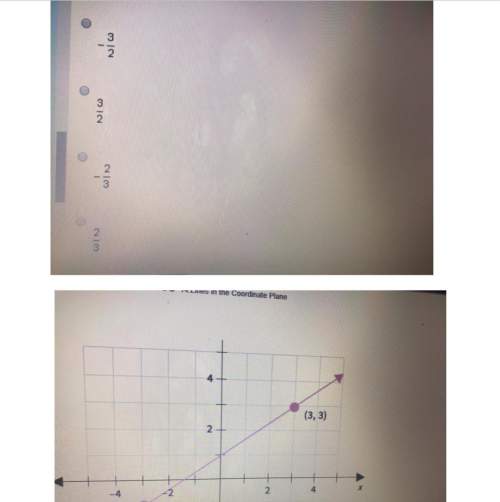
Mathematics, 21.11.2019 22:31 er38061
The height measurements of ten-year-old children are approximately normally distributed with a mean of 54.1 inches, and standard deviation of 2.7 inches. a) what is the probability that a randomly chosen child has a height of less than 51.85 inches?

Answers: 1


Another question on Mathematics

Mathematics, 21.06.2019 12:30
Timed***how else can the sequence for row 1 be written? notice: square a: 1 penny = 20 square b: 2 pennies = 21 square c: 4 pennies = 22 the sequence formed is geometric, with a1 = , and common ratio r = .
Answers: 1

Mathematics, 21.06.2019 13:30
2(n-1)+4n=2(3n-1)n=0no solutioninfinitely many solutions n= - 4 !
Answers: 1

Mathematics, 21.06.2019 21:10
Given: lines a and b are parallel and line c is a transversal. prove: 2 is supplementary to 8 what is the missing reason in the proof? statement reason 1. a || b, is a transv 1. given 2. ∠6 ≅ ∠2 2. ? 3. m∠6 = m∠2 3. def. of congruent 4. ∠6 is supp. to ∠8 4. def. of linear pair 5. ∠2 is supp. to ∠8 5. congruent supplements theorem corresponding angles theorem alternate interior angles theorem vertical angles theorem alternate exterior angles theorem
Answers: 3

Mathematics, 21.06.2019 21:30
In a test for esp (extrasensory perception), the experimenter looks at cards that are hidden from the subject. each card contains either a star, a circle, a wave, a cross or a square.(five shapes) as the experimenter looks at each of 20 cards in turn, the subject names the shape on the card. when the esp study described above discovers a subject whose performance appears to be better than guessing, the study continues at greater length. the experimenter looks at many cards bearing one of five shapes (star, square, circle, wave, and cross) in an order determined by random numbers. the subject cannot see the experimenter as he looks at each card in turn, in order to avoid any possible nonverbal clues. the answers of a subject who does not have esp should be independent observations, each with probability 1/5 of success. we record 1000 attempts. which of the following assumptions must be met in order to solve this problem? it's reasonable to assume normality 0.8(1000), 0.2(1000)%30 approximately normal 0.8(1000), 0.2(1000)% 10 approximately normal srs it is reasonable to assume the total number of cards is over 10,000 it is reasonable to assume the total number of cards is over 1000
Answers: 1
You know the right answer?
The height measurements of ten-year-old children are approximately normally distributed with a mean...
Questions

Mathematics, 10.09.2020 18:01

Mathematics, 10.09.2020 18:01

Mathematics, 10.09.2020 18:01

Mathematics, 10.09.2020 18:01

Social Studies, 10.09.2020 18:01

Mathematics, 10.09.2020 18:01

Biology, 10.09.2020 18:01

Biology, 10.09.2020 18:01

Mathematics, 10.09.2020 18:01

Mathematics, 10.09.2020 18:01

Mathematics, 10.09.2020 18:01

Mathematics, 10.09.2020 18:01

Mathematics, 10.09.2020 18:01

English, 10.09.2020 18:01

Mathematics, 10.09.2020 18:01

Mathematics, 10.09.2020 18:01

Mathematics, 10.09.2020 18:01

Mathematics, 10.09.2020 18:01

Mathematics, 10.09.2020 18:01

French, 10.09.2020 18:01







